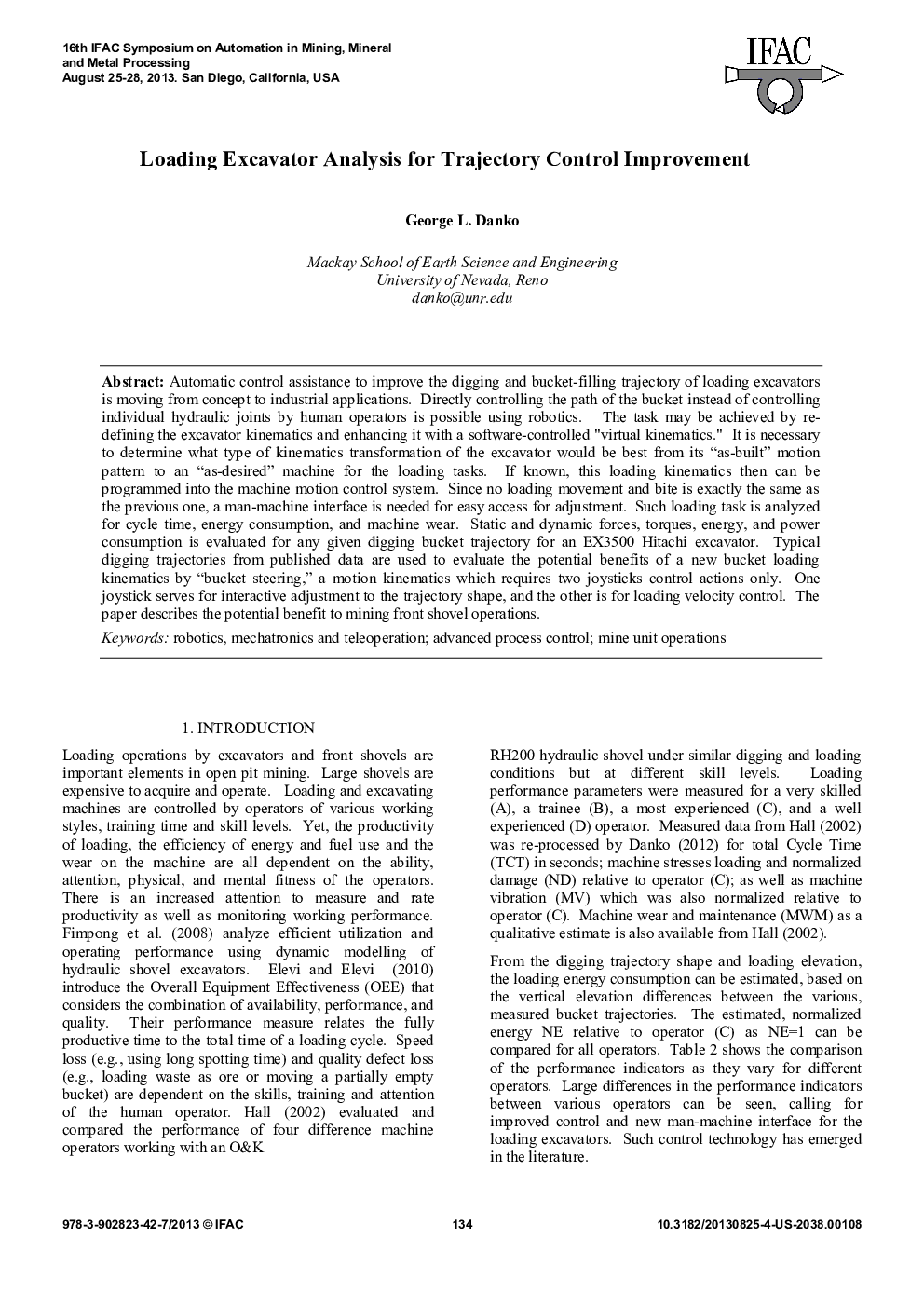| کد مقاله | کد نشریه | سال انتشار | مقاله انگلیسی | نسخه تمام متن |
|---|---|---|---|---|
| 709332 | 892065 | 2013 | 8 صفحه PDF | دانلود رایگان |

Automatic control assistance to improve the digging and bucket-filling trajectory of loading excavators is moving from concept to industrial applications. Directly controlling the path of the bucket instead of controlling individual hydraulic joints by human operators is possible using robotics. The task may be achieved by redefining the excavator kinematics and enhancing it with a software-controlled “virtual kinematics.” It is necessary to determine what type of kinematics transformation of the excavator would be best from its “as-built” motion pattern to an “as-desired” machine for the loading tasks. If known, this loading kinematics then can be programmed into the machine motion control system. Since no loading movement and bite is exactly the same as the previous one, a man-machine interface is needed for easy access for adjustment. Such loading task is analyzed for cycle time, energy consumption, and machine wear. Static and dynamic forces, torques, energy, and power consumption is evaluated for any given digging bucket trajectory for an EX3500 Hitachi excavator. Typical digging trajectories from published data are used to evaluate the potential benefits of a new bucket loading kinematics by “bucket steering,” a motion kinematics which requires two joysticks control actions only. One joystick serves for interactive adjustment to the trajectory shape, and the other is for loading velocity control. The paper describes the potential benefit to mining front shovel operations.
Journal: IFAC Proceedings Volumes - Volume 46, Issue 16, 2013, Pages 134-141